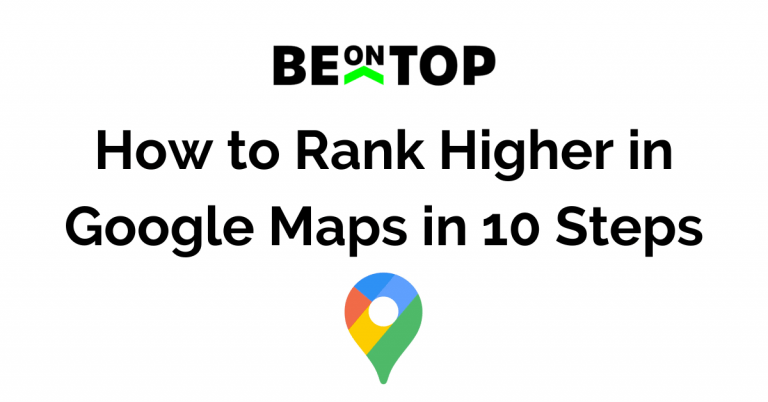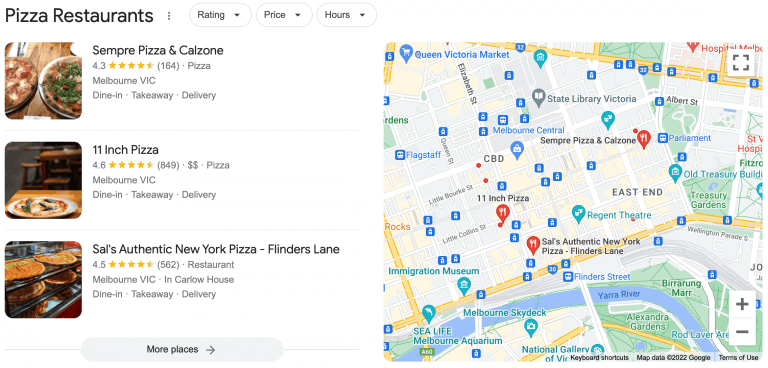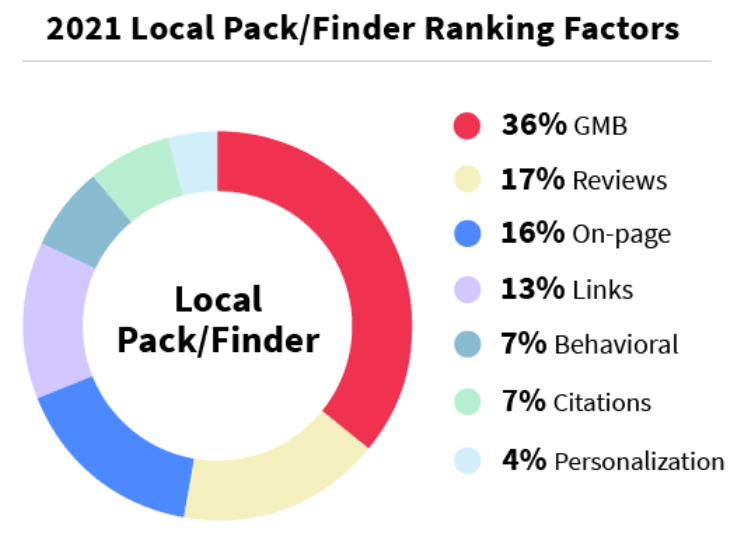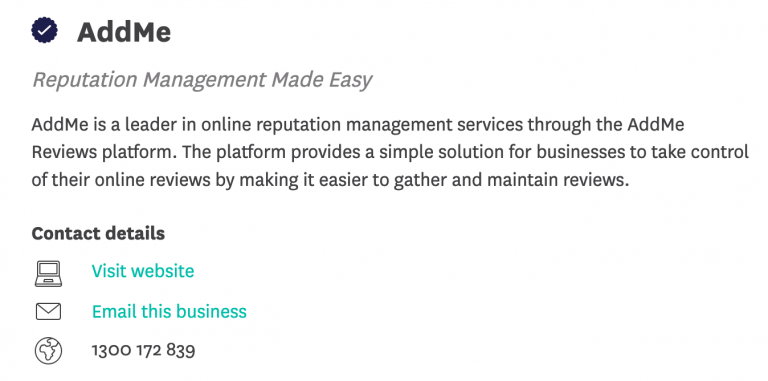
The internet (more specifically Google) has become more integrated into everyday life, hence businesses must adapt to survive. One way to ensure continued success is by ranking high on search engine results pages (SERPs). This is possible through Search Engine Optimisation (SEO), which is a process by which a website is made more visible to search engines. There are many benefits of ranking high on SERPs, including increased website traffic, higher brand visibility, and improved customer engagement.
Google Maps is a powerful tool that can help your business be found by potential customers who are searching for businesses like yours in their local area. SEO can target Google Maps which increases your chances of being found and helps generate more organic local traffic. However, utilising SEO tactics can not always give guaranteed Google Maps rankings.
Table Of Contents
- Why Is SEO for Google Maps Important?
- How to Rank in Google Maps
- 1. Claim & Verify Your Google Business Profile Listing
- 2. Add More Details to Your Google Business Profile
- 3. Post Regular Updates to Your Google Business Profile
- 4. Ask Your Customers for Google Reviews
- 5. Perform a Local SEO Audit
- 6. Optimise Your Site Specifically for Local Keywords
- 7. Make Sure Your NAP Information Is up to Date
- 8. Prioritise Building Credible Local Backlinks
- 9. Use Long-Tail Keywords
- 10. Create Great Website Content
- Get the Rewards of Higher Rankings With Google Maps SEO
Why Is SEO for Google Maps Important?
Google Maps can be a great tool to help promote your business amongst prospective customers within your local area. It also helps customers find your store location and other associated information such as your Google reviews. If you’re not optimising your Google Maps listing, you could be missing out on valuable traffic and customers.
When people search for businesses on Google, they often use location based keywords such as “near me” or “in [city]”. If your business appears in the Google Maps results for these searches, it can help you get found more easily by people who are actively looking for a business to purchase from like yours. Within Google Maps this top section is called the local 3 pack and is the easiest way customers will find your business.

Additionally, appearing in Google Maps for local search terms can help improve your website’s overall SEO ranking for other unrelated queries. Google considers Google Maps listings as part of its local search results, which can impact your website’s position within the search engine results page (SERP).
How to Rank in Google Maps
Google Maps’ ranking factors determine the placement of your business with the 3 primary factors being relevance, distance, and prominence.
- Relevance is determined by how well your business profile matches the user’s search query.
- Distance relates to how close your business is in proximity to the user’s search location.
- Prominence refers to how popular your business is offline and takes into account certain factors like Google reviews, links, articles, and overall popularity.
There are also many other contributing factors that can influence your ranking, like having a verified business listing or adding photos and videos to your Google Business profile. Let’s dive into 10 of the top ranking factors for ranking in Google Maps.
Claim & Verify Your Google Business Profile Listing
If you own a business, it’s important to claim and fill out your Google Business profile. When potential customers search for businesses like yours on Google, your MyBusiness profile will come up. This is your chance to show them what makes your business special and why they should choose you over the competition.
To claim your Google Business Profile listing, go to the website and sign in with your Google account. Then, enter your business name and address. Once you’ve found your business, click on the “Claim this Business” button. Then, you can start completing your GMB profile.
Add More Details to Your Google Business Profile
Ensuring your business details are up to date can ensure your business ranks higher in Google Maps. It is important to include accurate and up-to-date information, such as your hours of operation, products or services offered, and contact information. You can also add photos of your business and create special offers for potential customers.
Post Regular Updates to Your Google Business Profile
By regularly updating your profile with posts, you can show customers that your business is active and engaged. This can help build trust and confidence with all current and potential customers. Keeping your Google Business Profile viewers updated with posts can also improve your rankings in search results. Google favours fresh and up to date content which is why posts are a great way to add fresh content. Your Google Business Profile can rank higher when posts are updated and other non-essential details like photos or videos are added.

Ask Your Customers for Google Reviews
When it comes to online visibility, customer reviews are important for your business. They’re one of the top factors that influence whether or not someone will eventually visit or buy from your business. After all, potential customers love to read online reviews to decide whether or not a business is right for them or not. 91% of 18-34-year-olds trust online reviews as much as personal recommendations.
But what you may not realise is that proactively asking customers for reviews can have an even bigger impact on your business. Requesting reviews helps you get more five-star reviews. Which can in-turn boost your business’ prominence in search results. This then allows you to turn any potential negative reviews into positive ones.
Make it easy for customers to leave a review. Include links to your Google Business Profile in your email signature, on your website, and social media. Take it even a step further by personalising your requests sent out to customers by mentioning specific details about the customer’s experience. Our partner, AddMe Reviews, is a leader in review management software and gives businesses the tools to successfully manage and utilise the full power of their online reviews.
Perform a Local SEO Audit
To rank well in the Google Maps local 3 pack, your website must be optimised for your local audience. The best way to start is by performing a local SEO audit. Audits help identify areas where your website or listings may be falling short. In turn, you can focus your efforts on improving those areas, which can lead to better rankings and more traffic.
Performing a local SEO audit also ensures your website is up-to-date with the latest Google algorithms. These algorithm changes can have a big impact on your rankings. An audit can help you identify any areas where your website needs to be updated. It will be beneficial to dive deeper into your website’s domain authority, citations, and rankings in your target local keywords.
Optimise Your Site Specifically for Local Keywords
To rank your Google Business Profile on Google Maps in your local area, it is important to target localised keywords on your website. This ensures relevant searches on Google Maps can trigger your website to appear for relevant keywords.
You can create individual pages on your website for each local suburb or target area your business operates in. This helps your site send Google Maps search ranking signals for your target areas and helps you rank for these relevant keywords.
Make Sure Your NAP Information Is up to Date
One of the most important local SEO ranking factors in Google Maps is your business NAP (Name, Address, and Phone number). Consistency is key when it comes to your NAP information, both on your website, Google Business Profile, and across the web when building citations (read our local citation building guide for more information).
When your NAP is consistent across the web, it signals to Google that you are a legitimate business. This is especially important if you are a new business or if you have changed any information such as recently moving locations. Plus, it helps build trust with potential customers and also makes it easier for them to find you online and offline.
To ensure your NAP information is consistent, you must audit and update all your citations for all your major directory listings. Yelp and Yellow Pages are just 2 of the top business directories used specifically for local SEO. Make sure your NAP information is consistent across these directories for the most success. You may also take a look at the various places your business is mentioned online outside of the major directories. If you find any inaccurate NAP information, reach out to the website owner or administrator and request that they update the listing.

Prioritise Building Credible Local Backlinks
It’s no secret that backlinks are a strong ranking factor for local SEO. Credible backlinks tell Google that your site is also high quality.
Having a few well-placed local backlinks can increase the click-through rate of your website from organic search results. This means more traffic to your site and more potential customers visit your business. Backlinks don’t all function equally and can sometimes provide your business more harm than good. Here are just some of the best ways to secure quality local backlinks:
- Get involved with local events and organisations. This could mean sponsoring an event, or simply writing a blog post for that event afterwards which includes a link back to your website.
- Create helpful resources, such as a a free guide or checklist that others can download and link to from your website.
- Get Involved with a local network and get to know other local businesses and bloggers who could potentially provide links to your site.
Use Long-Tail Keywords
Many businesses aim to rank for short, high-traffic keywords. However, this can be difficult and highly competitive, meaning small businesses will find it difficult to rank high for short-tail keywords. A better strategy is to target long-tail keywords, which are less competitive and easier to rank for both in Google Maps and SERPs.
Long-tail keywords are simply longer, more specific phrases that target a narrower audience. For example, instead of just targeting the keyword “pizza restaurant” you could target “ best pizza restaurant in [city]”. Long-tail keywords tend to convert better because people who use long-tail keywords are usually further along in the buying cycle who are more ready to make a purchase.
Create Great Website Content
Creating high-quality content is what will make your website rank in the first place, irrelevant of local targeting or not. Local SEO for Google Maps rankings can only be effective if your website follows all best practices and actually includes content that Google deems to be worthy of a high ranking.
Creating great content is the most effective form to improve your SEO and local SEO for your website. Ranking factors in Google Maps tailor towards prioritising local websites in close proximity to a user’s location. A site with great content can still outrank a site based on its location, which is why creating site content that user’s like is always a great idea.
Get the Rewards of Higher Rankings With Google Maps SEO
There’s no denying that you need to put in the work if you want higher Google Maps rankings. Higher rankings mean more visibility for your business, which can lead to more customers and more sales. To make sure your online presence is optimised for local search, you need to regularly create quality localised content, update your listings with accurate information, and build credible backlinks. The list of tasks needed to optimise your site is much larger and this is just a small collection of processes needed to optimise your site for Google Maps.
It is important to be consistent and patient with your SEO methods to get the best results. The team at BeOnTop are experts at helping businesses rank for the keywords that matter most to each individual business. We help all businesses improve their local presence through the power of local SEO and understand the complexities it takes to rank successfully. Click the button below to receive a free local SEO audit for your business and learn how we can help elevate your business online today.


